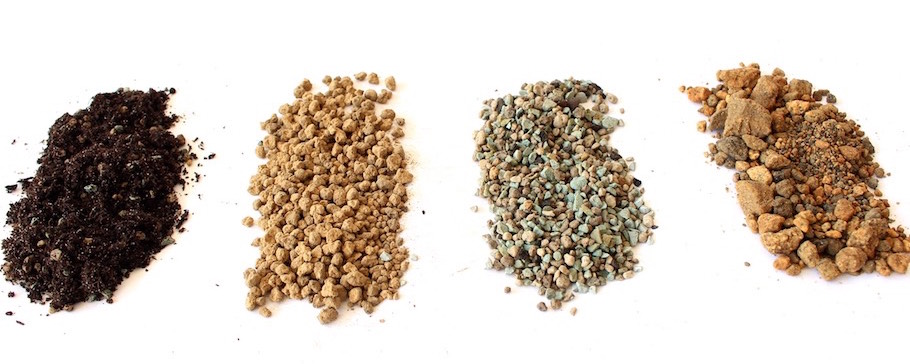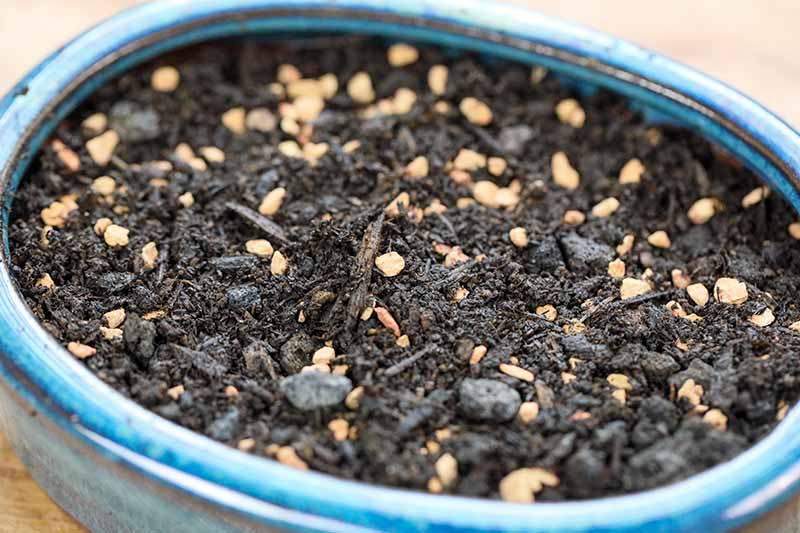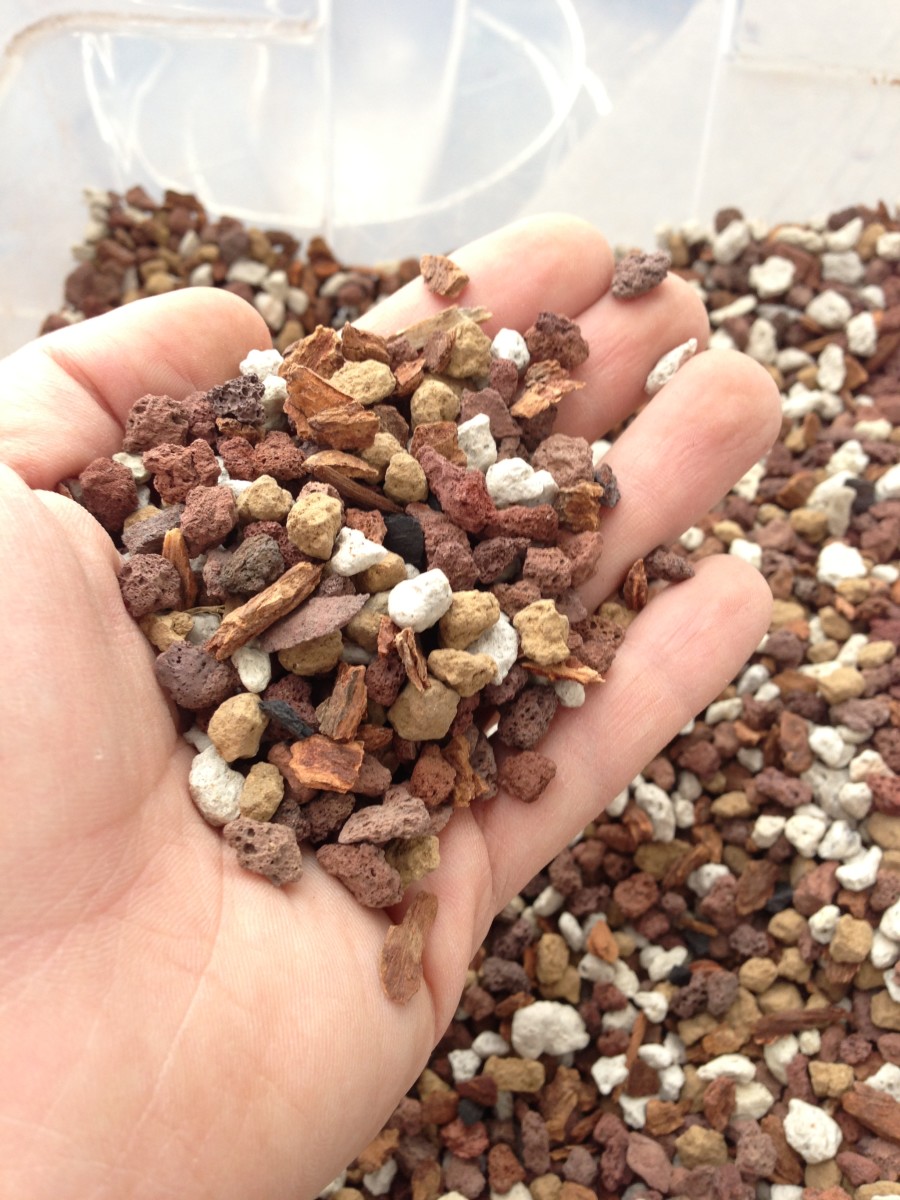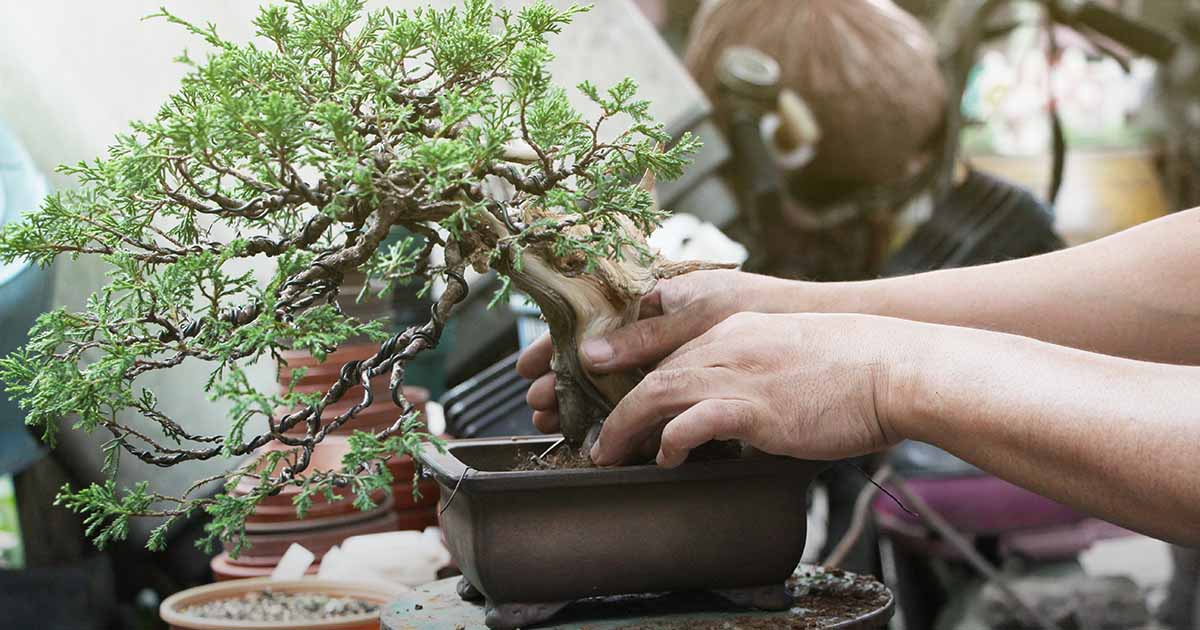On this page, we are going to take a look at the differing types of soil and substrates Utilized in bonsai cultivation, together with natural and organic and inorganic solutions.
We are going to also learn encouraged soil mixtures for several bonsai species, including deciduous, coniferous, and indoor kinds. From akadama and pumice to moss and river sand, we are going to dive into the interesting globe of bonsai soil and assist you understand why It can be a vital Portion of cultivating these exquisite trees.

Bonsai soil
What is bonsai soil?
Bonsai soil is a specialized type of soil that is specifically formulated for growing and maintaining bonsai trees. Unlike regular garden soil, bonsai soil is well-draining and provides the necessary nutrients and moisture balance for the tree's root system. The composition of bonsai soil is carefully designed to meet the unique needs of bonsai trees, ensuring their health and longevity.
The importance of bonsai soil
The choice of soil plays a crucial role in the success of your bonsai tree. The right soil provides optimal drainage, allowing excess water to flow freely and preventing root rot. It also promotes a healthy and well-developed root system, which is essential for the overall health and growth of the tree. Bonsai soil retains moisture while allowing air to reach the roots, striking the perfect balance for the tree's needs. Choosing the right bonsai soil is essential for maintaining a healthy and thriving bonsai tree.
Bonsai substrates
What are bonsai substrates?
Bonsai substrates refer to the different materials that can be used to create the ideal soil composition for bonsai trees. These substrates are carefully chosen to meet the specific needs of different species of bonsai trees and to ensure proper water drainage and nutrient availability.
Different types of bonsai substrates
There are various types of bonsai substrates available, each with its own unique characteristics and benefits. Some common bonsai substrates include:
- Organic materials: These include ingredients such as bark, peat moss, and coconut coir. Organic substrates help retain moisture and provide essential nutrients to the bonsai tree.
- Inorganic supplies: These include things like components like pumice, lava rock, and akadama. Inorganic substrates offer exceptional drainage, ensuring that surplus h2o does not accumulate throughout the roots of your bonsai tree.
- Soil amendments: They're substances that happen to be added into the soil mixture to boost its Houses. Samples of soil amendments include perlite, vermiculite, and sand. They improve the soil's aeration, drinking water-Keeping potential, and nutrient availability.
By knowing the different types of bonsai substrates as well as their properties, you'll be able to decide on the most fitted one for the bonsai tree's demands.
Organic or Inorganic Soils
Natural soils for bonsai
Organic and natural soils for bonsai are made up of all-natural elements which include bark, peat moss, coconut coir, and compost. These materials provide a abundant source of nutrients for the bonsai tree and market healthful root progress. Organic soils even have very good water retention Homes, making certain the tree receives satisfactory moisture among watering classes. On the other hand, it is vital to notice that natural soils could break down as time passes and grow to be compacted, leading to poor drainage and possible root concerns.
Inorganic soils for bonsai
Inorganic soils for bonsai consist of supplies like pumice, lava rock, akadama, and soil amendments like perlite or vermiculite. These supplies have fantastic drainage Attributes, blocking waterlogged soil and marketing aeration around the roots. Inorganic soils are preferred by quite a few bonsai fans because of their longevity and talent to supply a stable atmosphere for your bonsai tree's root system. Nevertheless, They could demand additional Repeated watering and additional fertilization, as they don't maintain just as much humidity or nutrients as natural soils.
Pluses and minuses of working with organic and natural and inorganic soils for bonsai
Deciding on concerning natural and organic and inorganic soils in your bonsai tree depends upon numerous aspects, such as the particular species of tree, your local climate, and private preferences. Here are the pros and cons of each:
Organic and natural soils:
- Pros: Deliver nutrients, superior water retention, endorse nutritious root improvement.
- Drawbacks: May well stop working after a while, prospective for poor drainage if not correctly managed.
Inorganic soils:
- Execs: Exceptional drainage, lengthy-Long lasting, stable natural environment for roots.
- Drawbacks: Significantly less h2o retention, may possibly require additional frequent watering and fertilization.
By thinking of the positives and negatives of both organic and natural and inorganic soils, you can also make an informed decision based upon the precise requirements of one's bonsai tree.
Soil components
Important parts of bonsai soil
Bonsai soil is often made up of three major factors: grit, natural issue, and clay. These parts work jointly to develop The best soil composition with the bonsai tree's root system.
- Grit: Grit, like sand or perlite, presents drainage and aeration from the soil. It helps avoid waterlogging and will allow air to reach the roots.
- Natural and organic make any difference: Organic make a difference, including compost or bark, gives nutrients into the bonsai tree. Additionally, it aids retain moisture and Increase the soil's Total construction.
- Clay: Clay particles present some h2o retention qualities and help bind the soil collectively. Nonetheless, excessive clay may result in very poor drainage and compaction.
Part of every soil part
Every single soil ingredient performs an important purpose in creating a nicely-balanced and balanced ecosystem with the bonsai tree's roots.
- Grit: Grit provides the necessary drainage and aeration in the soil. It helps prevent the roots from sitting in stagnant h2o, lessening the risk of root rot and promoting overall root health.
- Natural and organic issue: Organic and natural make any difference offers essential nutrients into the bonsai tree. It aids in dampness retention and contributes to the general structure of the soil.
- Clay: Clay particles assistance bind the soil collectively and supply some drinking water retention capacity. Nevertheless, it's important to stability the amount of clay in order to avoid concerns like inadequate drainage and compaction.
By being familiar with the roles of each and every soil part, you can create a well balanced bonsai soil mix that meets the specific requires within your tree.

Recommended Bonsai soil mixtures
Common bonsai soil mixtures
There are several common bonsai soil mixtures that have been proven effective for various types of bonsai trees. These mixtures typically consist of a combination of inorganic substrates, organic matter, and soil amendments.
Some of the commonly used bonsai soil mixtures include:
- Akadama, pumice, and lava rock: This mixture is popular among bonsai enthusiasts for its excellent drainage and water retention properties.
- Akadama, lava rock, and organic and natural matter: This mixture brings together the benefits of inorganic substrates with the nutrient-wealthy Attributes of organic make any difference.
- Pumice, perlite, and bark: This mixture provides superior drainage and aeration whilst retaining some dampness and furnishing nutrients.
These are just a few samples of bonsai soil mixtures, and The perfect mixture will rely on the precise wants of one's bonsai tree plus your weather.
Variables to take into consideration when picking a bonsai soil combination
When picking a bonsai soil combination, it's important to take into account the following aspects:
- Species of bonsai tree: Unique species have distinctive humidity and nutrient needs. Investigation the particular requirements of one's tree to select a soil combination that fulfills its requirements.
- Climate: The climate you live in can influence the moisture retention properties in the soil. Consider the common humidity and temperature close to you when choosing a soil mixture.
- Watering behaviors: Your personal watering habits and plan really should align Along with the soil mixture you select. Some mixtures involve much more frequent watering, while some retain moisture for extended intervals.
- Finances: Some soil factors may very well be costlier than Many others. Take into consideration your finances when choosing a soil mixture.
By getting these elements into consideration, you could select a bonsai soil combination that gives the most effective increasing circumstances in your tree.
Deciduous Bonsai soil
Best soil composition for deciduous bonsai
Deciduous bonsai trees, including maple or birch, have unique soil necessities to support their progress and wellbeing. The most beneficial soil composition for deciduous bonsai commonly features a combination of organic matter, inorganic substrates, and soil amendments.
A encouraged soil composition for deciduous bonsai might contain:
- Akadama: Provides very good h2o retention though permitting for drainage. In addition it releases nutrients slowly and gradually over time.
- Pumice: Promotes aeration and drainage within the soil, blocking waterlogging.
- Bark or peat moss: Adds organic make a difference for the soil, delivering nutrients and moisture retention.
This soil composition makes certain that the roots of deciduous bonsai trees get the correct harmony of dampness, nutrients, and oxygen for ideal expansion.

Coniferous and Pine soil
Ideal soil mixture for coniferous and pine bonsai
Coniferous and pine bonsai trees have specific soil requirements due to their water retention needs and preference for acidic soil. An ideal soil mixture for coniferous and pine bonsai should provide good drainage while retaining moisture and maintaining the desired pH level.
A recommended soil mixture for coniferous and pine bonsai may include:
- Akadama: Provides excellent water retention while allowing for sufficient drainage. It releases nutrients slowly over time.
- Pumice: Promotes aeration and drainage while in the soil, blocking waterlogged roots.
- Peat moss: Provides natural and organic issue and acidity on the soil, generating an excellent pH stage for coniferous and pine trees.
This soil mixture makes sure that the roots of coniferous and pine bonsai trees receive the best balance of dampness, nutrients, and acidity for their certain wants.
Akadama
What exactly is akadama?
Akadama is usually a style of clay soil that is commonly Utilized in bonsai cultivation. It truly is known for its superb water retention Attributes, which guarantee a gentle supply of moisture towards the bonsai tree's roots. Akadama can also be prized for its capability to launch nutrients bit by bit after a while, supplying a steady source of nourishment for the tree.
Great things about working with akadama in bonsai soil
Employing akadama in bonsai soil presents several Advantages:
- Drinking water retention: Akadama has Excellent water retention Attributes, letting it to hold dampness without the need of getting waterlogged. This ensures that the bonsai tree's roots receive a steady supply of h2o, advertising and marketing wholesome growth.
- Nutrient launch: Akadama slowly and gradually releases nutrients to the soil eventually, supplying a regular source of nourishment for the bonsai tree. This minimizes the necessity for Regular fertilization and allows manage a balanced nutrient profile.
- Aeration: Inspite of its h2o retention abilities, akadama also offers enough aeration into the bonsai tree's roots. It allows air to get to the root technique, stopping issues which include root rot resulting from deficiency of oxygen.
By incorporating akadama in to the bonsai soil, you could develop an exceptional rising environment for your personal tree, making sure its wellbeing and vitality.

Lava rock
How lava rock benefits bonsai soil
Lava rock is a popular component in bonsai soil mixtures due to its excellent drainage and aeration properties. It is typically used in conjunction with other substrates to create the ideal soil composition for bonsai trees.
The benefits of lava rock in bonsai soil include:
- Drainage: Lava rock provides excellent drainage, preventing waterlogging and ensuring that excess water flows freely through the soil. This helps prevent root rot and provides a healthy environment for the roots to thrive.
- Aeration: The porous mother nature of lava rock will allow air to circulate inside the soil, offering oxygen on the bonsai tree's root method. Appropriate aeration is crucial for healthy root improvement and overall tree growth.
- Longevity: Lava rock is a durable content that doesn't stop working quickly. This makes certain that the soil composition continues to be steady as time passes, lessening the need for Regular soil replacements.
Lava rock is offered in several measurements and designs, allowing for for personalisation dependant on the precise needs of one's bonsai tree and soil specifications.
Differing kinds of lava rock
There are actually different types of lava rock that may be used in bonsai soil mixtures, together with:
- Black lava rock: Black lava rock is really a generally applied substance in bonsai soil mixtures. It provides great drainage Qualities and provides an aesthetic element to the overall presentation of your bonsai tree.
- Red lava rock: Crimson lava rock is an additional popular selection in bonsai soil mixtures. It offers equivalent drainage and aeration Added benefits as black lava rock but has a distinct reddish colour that adds visual desire to your container.
Each black and purple lava rocks are widely out there and may be simply integrated into your bonsai soil combination.
Potting
Essential techniques for profitable bonsai potting
Potting is really a important course of action in bonsai cultivation, as it immediately impacts the health and fitness and development in the tree's roots. Below are a few essential techniques for thriving bonsai potting:
- Choose the proper pot dimensions: Find a bonsai pot that allows for root expansion while still offering a snug in shape. Steer clear of pots that happen to be also massive, because they may result in too much soil humidity and lousy root growth.
- Use bonsai wire: Safe the tree while in the pot working with bonsai wire to be sure balance. This stops the tree from shifting or starting to be uprooted during watering or powerful winds.
- Trim and spread the roots: Before potting the bonsai tree, carefully trim and spread out the roots. This encourages outward growth and prevents root tangling or root-bound problems.
- Include mesh screens: Location mesh screens over the drainage holes at The underside of your pot to prevent soil erosion and be certain right drainage.
- Use contemporary bonsai soil: When potting, generally use contemporary bonsai soil to provide the mandatory nutrients and ideal increasing disorders for your roots.
By pursuing these essential suggestions, you are able to guarantee a successful potting system and market the general well being and advancement within your bonsai tree.
The position of bonsai pots in soil moisture Regulate
Bonsai pots Perform a crucial position in soil dampness Manage, directly impacting the wellbeing and development with the tree. Bonsai pots are typically shallow and possess drainage holes, allowing surplus water to escape and avoiding the soil from becoming waterlogged.
The look of bonsai pots promotes evaporation and air circulation, which will help control soil moisture concentrations. The shallow depth and extensive opening in the pot expose far more area space with the soil into the air, aiding in humidity evaporation. This prevents the roots from sitting down in excessively soaked soil, cutting down the chance of root rot and also other h2o-relevant challenges.
Additionally, the drainage holes in bonsai pots make it possible for any surplus h2o to flee, stopping waterlogged soil and marketing aeration within the roots. Good aeration is important for the health and advancement of the root system, making certain the bonsai tree receives the mandatory oxygen for advancement.
By using bonsai pots suitable for successful dampness Regulate, it is possible to develop a good ecosystem for your personal bonsai tree's roots and endorse its General wellness and vitality.
In summary, deciding on the correct bonsai soil is important to the results and health and fitness of your bonsai tree. click here Comprehending the different types of bonsai substrates, the get more info role of natural and inorganic soils, The true secret elements of bonsai soil, and the assorted suggested soil mixtures will allow you to present the best increasing ailments for your personal bonsai tree. Whether there is a deciduous or coniferous bonsai, incorporating elements like akadama and lava rock can increase the soil's drainage and nutrient availability. Furthermore, being attentive to potting tactics and applying bonsai pots created for moisture Command will even further assist the flourishing expansion of your respective bonsai tree. With right being familiar with and implementation of bonsai soil procedures, you are able to take pleasure in the splendor and artistry of bonsai cultivation For some time to come back.
